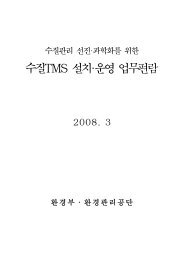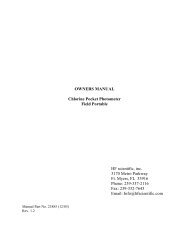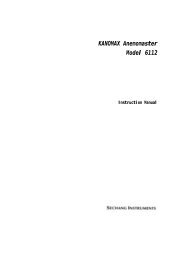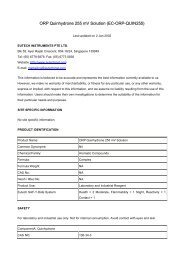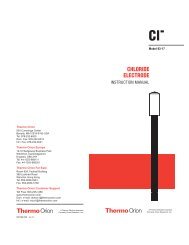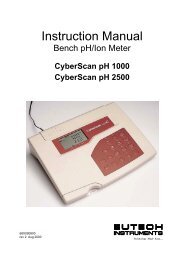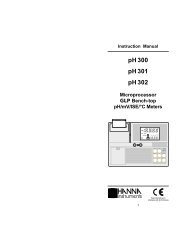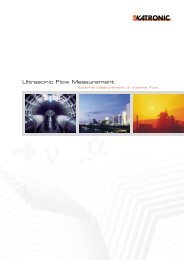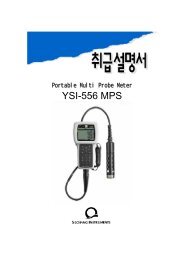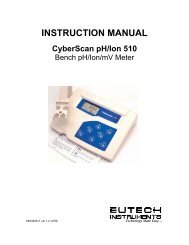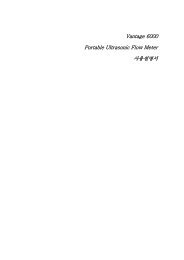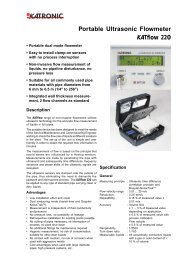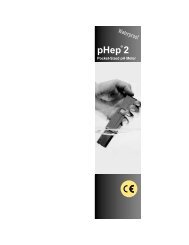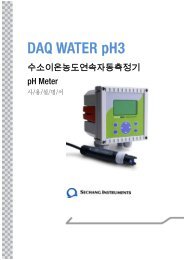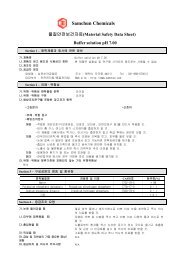MODEL 2100AN LABORATORY TURBIDIMETER INSTRUMENT ...
MODEL 2100AN LABORATORY TURBIDIMETER INSTRUMENT ...
MODEL 2100AN LABORATORY TURBIDIMETER INSTRUMENT ...
Create successful ePaper yourself
Turn your PDF publications into a flip-book with our unique Google optimized e-Paper software.
SECTION 2, continued<br />
2.3.3.1 Dilution Water Filtration<br />
1. Attach the syringe to<br />
the 3-way valve by gently<br />
twisting the square end<br />
into the syringe tip. Attach<br />
the connector, tubing and<br />
a 0.2 micron filter (clear<br />
part faces syringe) as<br />
shown. Be sure the<br />
connections are tight.<br />
2. Fill a beaker or<br />
container with the water to<br />
be filtered. Insert the<br />
tubing into the container.<br />
Slowly draw the water<br />
into the syringe by pulling<br />
up on the syringe plunger.<br />
2.3.4 Indexing and Matching Sample Cells.<br />
Precise measurement of multiple, low-turbidity samples requires good laboratory<br />
techniques to achieve accuracy and good repeatability. Matched sample cells are<br />
required to minimize the effects of optical variation among cells. Alternatively,<br />
a single sample cell used for every measurement minimizes reading variability<br />
caused by cell to cell imperfections. Once cell orientation in the cell holder is<br />
established, always use the alignment indicated on the cell, regardless of<br />
sample-cell choice (refer to Section 2.3.4.1 on page 20 and/or Section 2.3.4.2 on<br />
page 22). Using a single cell provides better accuracy and precision than matched<br />
cells. A Flow-Cell System provides the best accuracy and reproducibility with the<br />
added advantage of sample pour through convenience (see SECTION 5 on<br />
page 49).<br />
2.3.4.1 Indexing a Single Sample Cell<br />
Add an orientation mark to a single sample-cell as follows:<br />
20<br />
3. Draw about 50 mL of<br />
sample into the syringe.<br />
Slowly push on the<br />
plunger to force the water<br />
through the filter and into<br />
a graduated cylinder or<br />
volumetric flask. Repeat<br />
Steps2and3until<br />
obtaining the desired<br />
amount of water.<br />
Note: Pushing water through<br />
the filter becomes more<br />
difficult as the filter clogs.<br />
Discard a clogged filter and<br />
attach a new filter when<br />
necessary. Replacement<br />
filters are available in<br />
packages of 10 (Cat. No.<br />
23238-10).



